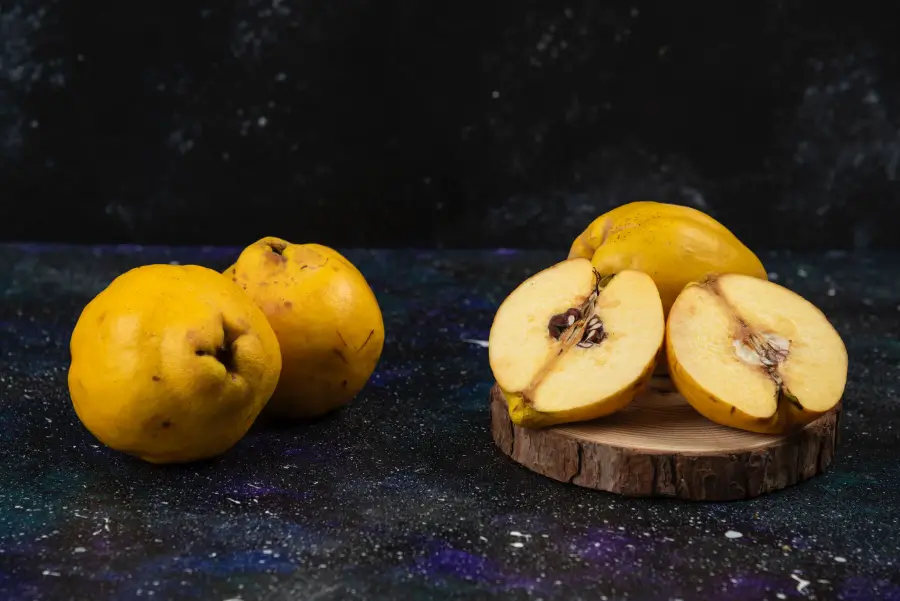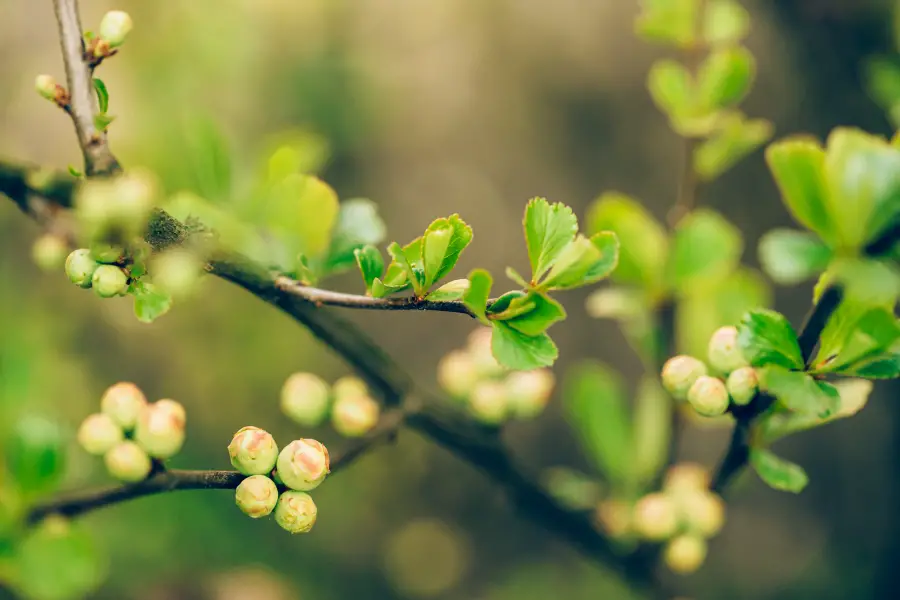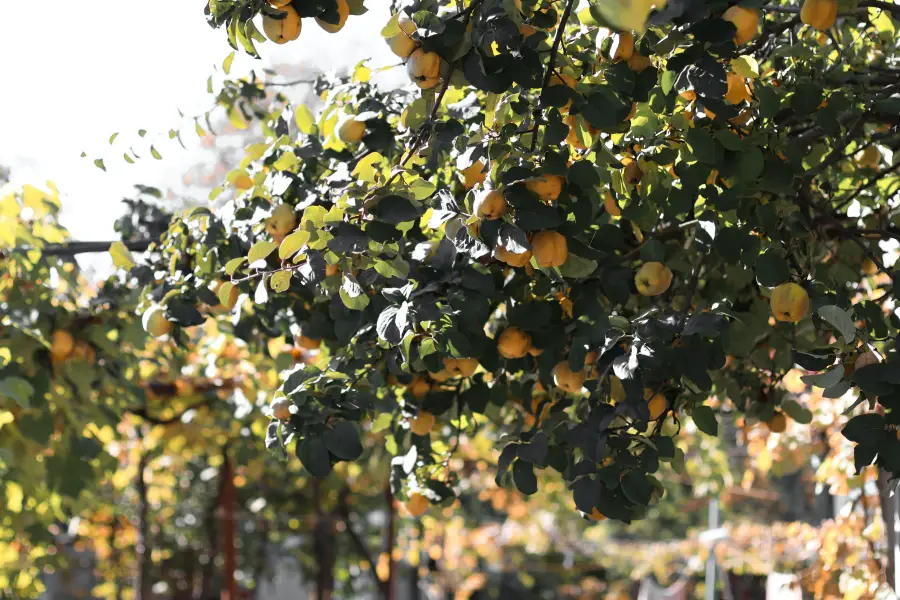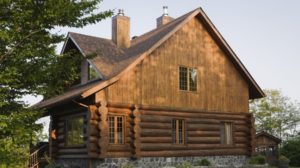I ended up searching for information about quince wood based on a question from a reader whose hobby is making pipes. He told me that he uses cherrywalnut, oak or plumand for the mouthpiece, dud or rose. I was wondering if she could use dried fig or quince twigs for the mouthpiece. She was afraid that in the presence of hot tobacco smoke they would become toxic. About fig wood I knew that it contained latex that caused skin irritation. That's why the wood must be thoroughly dried before use. But I didn't know why quince wood would be dangerous. That's how I started my search for information about a wood about which very little has been written, but which has many legends about the yellow fruit that perfumed my grandparents' house.

Is quince wood toxic or not
I haven't found any sources that say quince wood is toxic. However, I did find information about its use as firewood or for smoking chicken, pork, beef and fish. An animal lover's forum listed it as a safe species. For example, the forum's experts recommended using quince twigs, after they have been washed to remove dirt, to make a nest for parrots.
The only references to toxicity refer to quince seeds containing toxic substances called nitriles. These, under the action of enzymes in the stomach, are converted into hydrocyanic acid (prussic acid), a highly toxic gas with a bitter almond smell. Although this sounds very dangerous, it is not, as the same substances are also found in apple and hair, fruit trees of the family Rosaceae, of which quince is one. The seeds are only dangerous if eaten in very, very large quantities.
The fruit of sin, symbol of love, strengthener of power
About quince (Cydonia oblonga) there are a lot of myths, symbols and legends. Many come from Greece, where the quince has been cultivated on the island of Crete since ancient times. In fact, the Latin name is from a village in Crete, Kidonia. In ancient times the quince symbolised love, joy, protection, marriage, happiness and fertility. Aphrodite, the goddess of beauty and love, often held a quince in her hand as a symbol of love and fertility. Young Greeks used to give quinces to their guests when they got married, and the bride would bite the quince to perfume her kiss.
Jewish mythology claims that the serpent did not tempt Eve with an apple but with a quince. The confusion arises from the fact that the quince is called the golden apple, in the Bible. Some sources claim that the apple tree had not been acclimatised in the area at that time, so it could only be quince, which is native to the region. In the Muslim faith, the Prophet Mohammed is said to have urged his followers to eat quinces because they sweeten the heart. He also claimed that Allah did not send any prophet as his messenger before feeding him with Paradise Gutuiato increase its power.
The Romans also considered quince a symbol of love, and Pliny the Elder praised the medicinal properties of quince leaves and fruit in his writings. From Roman times there are also writings with recipes for quince with honey and other delicacies.

A fruit tree that can bear hard, fragrant fruit for 25 years
Gutuiul - fifteen (English), quince (Italian), cognossier (French), even (German) - comes from Western Asia. The area of origin is around the Caucasus - Armenia, Azerbaijan, Iran, Southwest Russia, Turkmenistan. It has a long history of cultivation being mentioned in documents for more than 4000 years. In Mesopotamia, present-day Iraq, quince was cultivated long before the apple. From these areas it spread to Europe and then all over the world. It is related to the Chinese quince (Pseudosydonia sinensis), but they are different genres.
It is a fruit tree that prefers sun and fertile, well-drained soils and bounces back. It thrives well in the temperature range 10-30°C, and to flower the temperature should not be below 7°C. The flowering period is in May, after it has ripened. It grows slowly, fruits for 25 years and lives for around 50. It propagates mostly by grafting, very rarely from seed.
The juniper grows 4-6 m tall, but can reach up to 8 m high. Several stems grow from the base and only one needs to be left to fruit well. The trunk does not grow very thick, and the bark is grey-greenish-grey, smooth and sensitive, and can be easily injured. The crown is quite rich and irregular, with branches that can grow twisted and broad, simple oval leaves with a surface covered in fine hairs. The flowers are white or pink, solitary, with 5 petals. The fruit, quince, is yellow when ripe and covered with fine hairs. It is oval-round, hard, astringent and very aromatic. It has a high pectin content, which is why marmalades and jams are easily made, as they gel quickly.
Wood - characteristics, properties
In cross section through the trunk of the quince we can see the difference between sapwood and heartwood. The sapwood is very pale yellow to white. The heartwood has a rich range of colours from light yellow to deep reddish brown. The annual rings are inconspicuous, but distinct and close together due to the slow growth.
The texture is smooth, similar to hairwoodgenerally straight, with discreet gloss. The twisted branches show distinctive patterns created by the richness of colour. The pores are small and evenly spread throughout the annual ring. Broad medullary rays can form maple-like patterns.
Quince wood takes a long time to dry and cracks and warping can occur. The wood is hard, strong and firm, but soft and easy to work. It can be carved and turned. It oils, waxes and varnishes easily and the results are spectacular. Glues smoothly.

Very good for knife handles, but also for smoking meat
Because of its fine texture and warm colours, quince wood has been used for centuries to make inlays for furniture, art and craft products, knife handles, as well as household and decorative objects. And now it is used by enthusiasts to make handles for collectible knives or spoons. It is, however, a very hard wood to find and therefore quite expensive. The more readily available Chinese version is used to make platters, musical instruments and frames.
Quince wood can also be used as firewood. It has a high calorific value, higher than spruce, pine or green ash. But it must be dried thoroughly beforehand because otherwise it gives off smoke and sparks. If well dried, it burns for a long time. Its hardness gets harder and harder as it dries, so it is advisable to split it as soon as it has been cut (trunk or branches). When burning, it gives off a pleasant smell, like any fruit tree.
Can also be used at smoking food. When dry it doesn't smoke much, so it can be used without problems even indoors. The smoke has a slightly sweet, fruity and spicy fragrance. The aroma it gives off is subtle, matching best with mild flavored ingredients. It is ideal for smoking foods such as chicken, pork, beef or fish.
Like any fruit tree, quince is important for its fruit, not its wood. The quince is used for jams and marmalades, but also for cooking. Apple quince sauce goes well with autumn roast pork or duck, and cooked quince slices go wonderfully with roast goose. Gourd is also used in herbal medicine as a good remedy for nausea in early pregnancy or to cure digestive disorders.
I hope you find the above information useful. As usual, additions are welcome. And if you have any questions or queries, please leave them in the space below. I'm sure I'll reply.
Do you want to know about the wood of a particular species? Search here, it is very possible to find them!




























Add comment